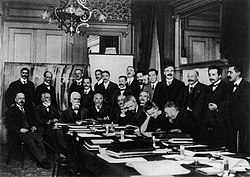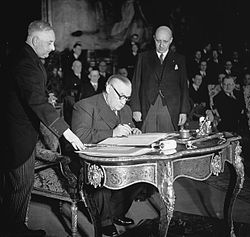| History of Belgium |
|---|
 |
| Timeline • Military • Jewish history • LGBT |
The following is a timeline of the history of Brussels, Belgium, in the 20th century.
| History of Belgium |
|---|
 |
| Timeline • Military • Jewish history • LGBT |
The following is a timeline of the history of Brussels, Belgium, in the 20th century.
![Assassination attempt [nl; fr] on King Leopold II in Brussels, 15 November 1902 Assassination attempt on king Leopold II of Belgium in Bruxelles 1902.jpg](http://upload.wikimedia.org/wikipedia/commons/thumb/d/d1/Assassination_attempt_on_king_Leopold_II_of_Belgium_in_Bruxelles_1902.jpg/250px-Assassination_attempt_on_king_Leopold_II_of_Belgium_in_Bruxelles_1902.jpg)



















{{cite AV media}}: CS1 maint: numeric names: authors list (link)